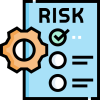IT Consulting
Kang Consultancy is a licensed Qualified Electronic Money Provider, authorized to offer digital payment services and e-money issuance.

We offer IT Consulting Services in the following areas
IT strategy and infrastructure planning
IT Strategy and Infrastructure Planning involves aligning technology initiatives with an organization’s business goals. It includes:
Defining IT goals that support business objectives.
Assessing current infrastructure (hardware, software, networks)
Planning upgrades or new implementations to ensure scalability, security, and efficiency.
Budgeting and resource allocation for technology investments.
Risk management and ensuring compliance with standards.
Creating roadmaps for long-term IT development and innovation.
Digital transformation roadmaps
A Digital Transformation Roadmap is a strategic plan that outlines how an organization will use digital technologies to fundamentally change its operations, business models, customer experiences, and overall value delivery. It serves as a guide to navigate the complex journey of integrating digital tools and processes across all facets of the business.
Technology risk assessments
To understand and manage risks that could impact an organization’s operations, data, or systems due to technology-related vulnerabilities or threats.
Key Components:
-
Asset Identification – Listing systems, data, and technology assets.
-
Threat Identification – Recognizing potential threats (e.g., cyberattacks, hardware failures).
-
Vulnerability Analysis – Examining weaknesses in systems or practices that could be exploited.
-
Risk Evaluation – Estimating the likelihood and impact of various risks.
-
Mitigation Strategies – Implementing controls to reduce or eliminate risks (e.g., firewalls, backups, policies).
-
Monitoring & Review – Continuously checking for new risks and assessing the effectiveness of controls.
IT support and systems integration
IT Support refers to the services that help individuals and organizations use and maintain their technology systems. This includes:
Troubleshooting hardware/software issues
Installing and configuring systems
Monitoring network performance
Providing helpdesk assistance
Ensuring cybersecurity and data backups
Systems Integration involves connecting different IT systems, applications, and hardware so they function as a coordinated whole. This includes:
Linking software and databases
Ensuring seamless data flow between systems
Automating processes
Upgrading legacy systems to work with new technology
Improving overall efficiency and scalability




